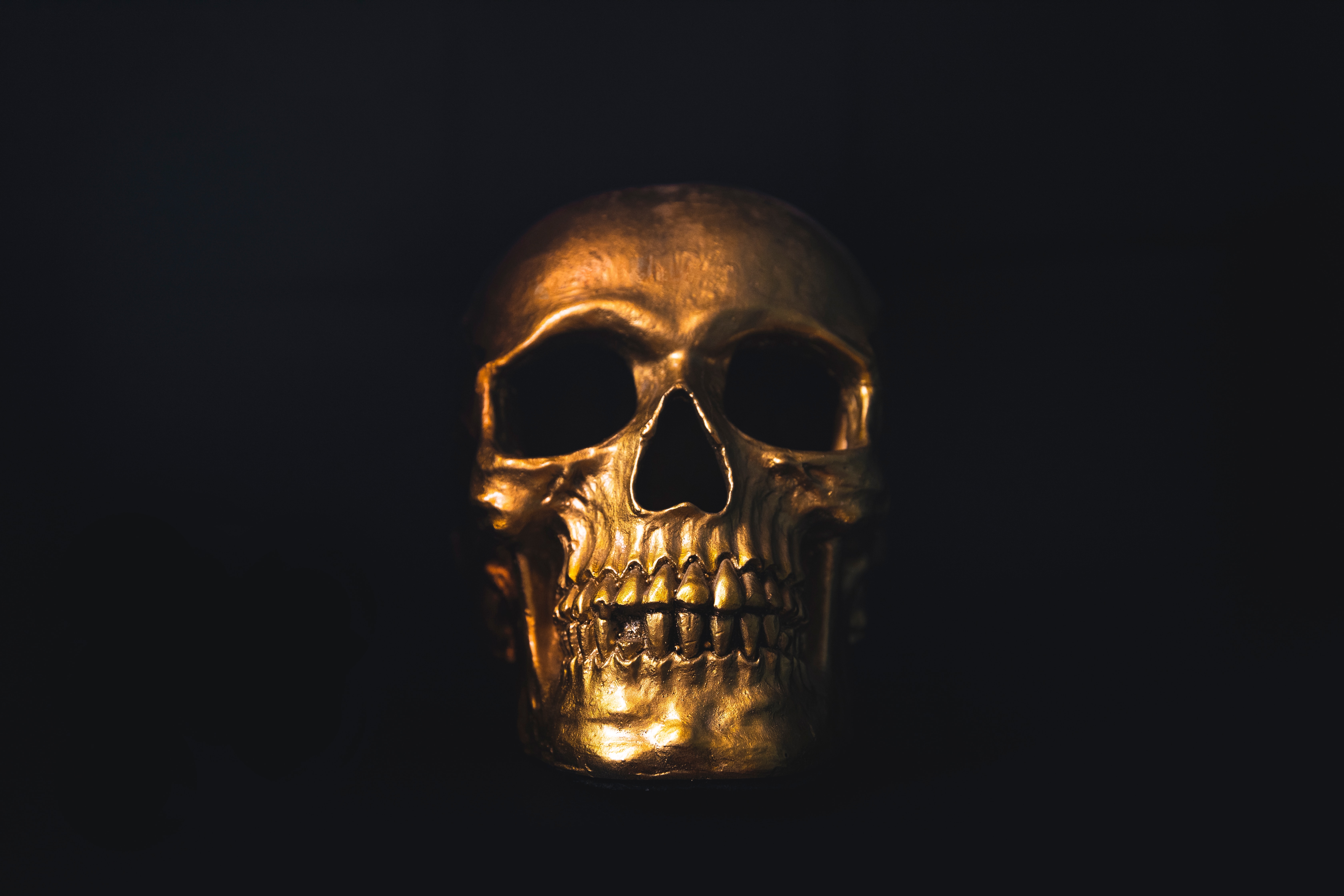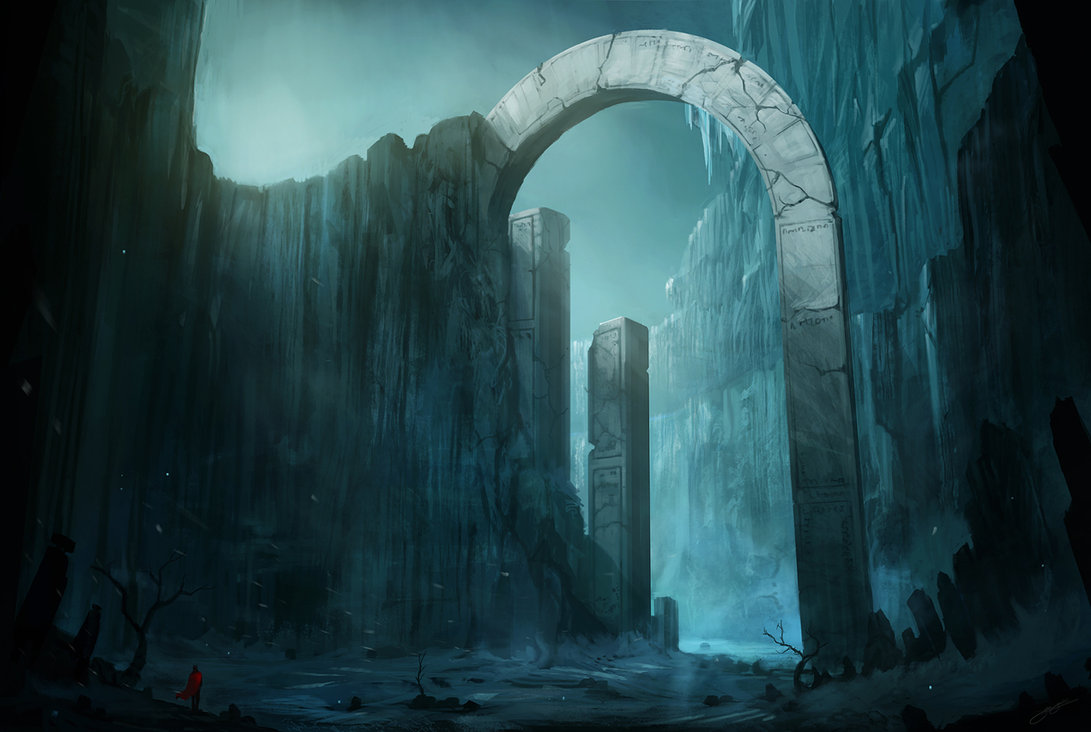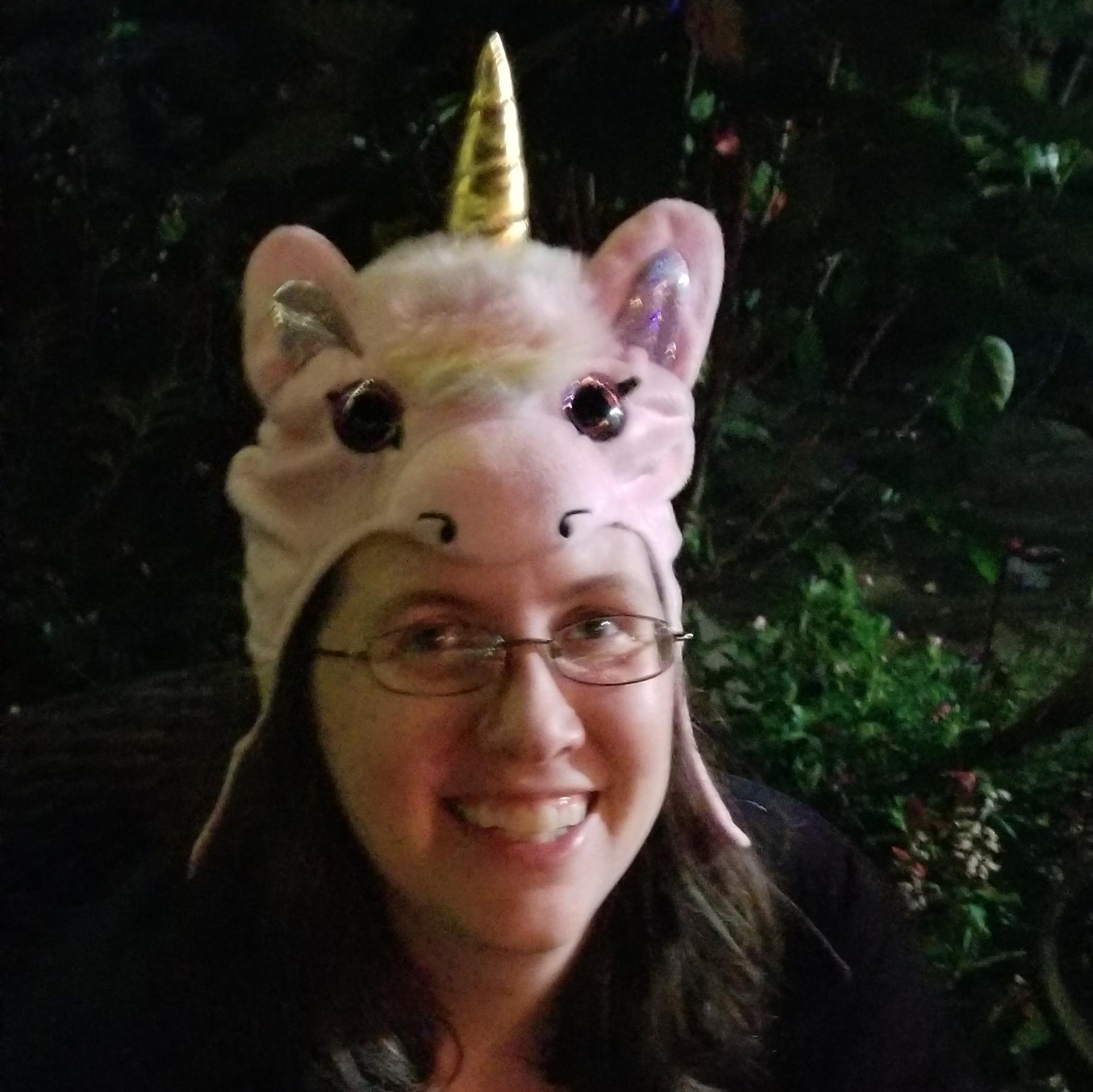The death rattle
According to the myth the first bell given to the nocturna was the death rattle. It was capable of postponing death and the branch of Arcana Mortis that shares its name happens to be the first principle all arcanists who practice the genre must learn. The branch is dedicated to discussing the theory of death, why it should be celebrated, and how to further ones power and control in the genre.
Its principals describe death as a direct, sudden, and inescapable change, and nothing about the statement indicated whether the change is good or bad. The goal of this philosophy is to teach a respect of death, but obliterate the fear of it. Death is never welcomed, but you don't turn her away when she knocks on your door either.
A symbolic gesture
The name is more than just a nod to a myth. The death rattle is also symbolic for practitioners who are on their way of entering a much larger world with a deeper understanding of both death and life. In a sense, they are experiencing their own death rattle as they begin their study. When they progress and finally master the branch, they often realize they are no longer the same person they once were.
This transformation is a metaphorical one. They obtained a newfound love of life. The various sensations of life are often more profound and defined. Their next meal, no matter how simple or bland, will be the best meal they've ever had. Every smell will fascinate them, no matter how pleasant or unpleasant the smell may be. No matter what, their life will fill them with joy.
A near death experience.
Many who practice the genre see that by becoming so understanding of death one unknowingly experiences it. This near-death experience is the cause for such overwhelming sensations and lust for life. It also makes it clear why such a vibrant color is used. Those who master this genre see color in a different way. No matter how vibrant it is to a layman, they see it as an overwhelming burst of light that can be seen no matter where they are in the room. They surround themselves in a wash of color so that they are constantly absorbing kaleidoscopic vistas.
The only useful ability given by those who learn and master this branch is the standard passive ability for all those who practice the genre. for more, see Death Rattle
The bell of shapes
The second bell given to the nocturna during their first war was the bell of shapes. When struck, the bell of shapes was said to create arcane configurations all across the battlefield. These shapes would fade to the point where they can no longer be seen unless an enemy steps upon them. This triggers the spell that was cast and could bring about all forms of devastation on an enemy army. Waves of the deadliest diseases would crash against enemy lines as they charged. The Lost Souls of the Dead would rise and reach for enemy combatants, ripping their souls from their bodies and pulling them back to the domain of death.
The Bell of shapes is a branch of Arcana mortis and happens to be the first use of the
the manifestation of traps ever recorded in history. The Bell of shapes discusses the theory and practice of creating and placing arcane traps fueled by the energy of death. These traps are the source of many loopholes that necromancy uses to kill indirectly with the energy of death. Each trap is a condensed source of entropy, packed tightly under immense pressure. When triggered, the results are always explosive.
On its own, the brands does little to give an arcanist any kind offensive capability, but when coupled with other branches, it becomes the source of many essential spells. Without the bell of shapes, an arcanist must find some other means of learning the manifestation of traps to use spells requiring it.
A theory of Shapes
Any who practice the genre place a unique symbolic value in circles. They often see life and death as a cyclical function. This is not belief in reincarnation, rather it is a belief that life and death are two sides of the same coin and one begets the other. Anything born is destined to die and all that dies was destined to be born. They see life and death as a self-fulfilling prophecy, and resort to using circles as their primary manifestation for traps as a symbolic gesture to this fact.
The prophecy of life and death is the reason that to seek immortality, something that a select few necromancers wish to achieve in one form or another, is a great crime against death itself. Immortality interferes with this philosophy and all it represents. To them, it should be avoided. At times, they also believe it should be actively prevented, and if it is found by any who seek it, promptly removed from the equation.
Even if one could achieve immortality without breaking the binds of natural law, it would still be considered taboo among arcanists in this genre. This is due to the symbolism of the genre and what those who practice the genre believe in. To achieve immortality is to deny oneself the joys of life, as well as the joys of death. This fate is something that simply won't do.
The Calling Chime
The third Bell given to the nocturna was called The Calling Chime. The nocturna used this to gain the ability to communicate with the dead. This was primarily used in the first war to call back the scouts who never made it home and learn what they knew.
It would allow them to call fallen warriors back so that they may learn from the mistakes they made on the battlefield. It gave them a wealth of knowledge that allowed the nocturna to learn about their enemies in ways that were never possible before.
In Arcana mortis, the story of the chime lives on. Those who practice the genre believe that death should never be lonely. They routinely use a series of spells that allow them to commune with and walk among the Dead. They also use the spells to ensure that those who die do not die alone.
Fun fact: The soul
Resurrection can animate the body, but it fails to reanchor the soul to that body. There is an entire community of mages who are trying to figure out how to reattach the soul to the body. Few have been successful in this regard, but some have been able to revive fallen comrades. When the body dies the soul immediately tries to leave it. To properly bring someone back from the dead it must be done quickly after their death. This is why those who practice this genre focus more on preventing people from dying in the first place. Once you are dead, it is nearly impossible to bring you back without divine intervention. Even if you are successful, there was likely a bit of luck involved, or unseen forces at play.
The Costs of Dying
It is a known fact that when someone dies, death appears before them in an avatar specifically chosen to suit the individual. There's a reason for this. So many die alone and over the course of countless eons, death has become empathetic towards this fact. Death laments at the sorrow on their faces as the realization that they never got to see a loved one again hits them.
Those who practice the genre share this burden. No one wants to die alone. They use these spells to connect the souls of the dead with the living. They do this so that they may speak once more even if it is for the final time. This is one of the main forms of income for people who specialize in arcana mortis, but lack the stomach to work on the bodies of the dead.
The Resurrection Bell
The next bell given to the nocturna by death was The Resurrection Bell. It granted them the ability to raise the dead to fight, long after their souls have parted their bodies. Legions of the undead were thrown against enemy lines, only to rise again for another strike. The resurrection bell deals exclusively with the complex art of commanding the undead, and is the focus of study for most necromancers.
Commanding the dead is requires a gentle approach. One cannot simply raise the dead en masse and expect it to end well. The dead are mindless, but they are fiercely loyal. This is no accident. Each body raised from the dead must be prepared, properly cleansed, cleaned, and given full attention during the process. It is a deeply personal task. While other branches teach respecting death on a metaphysical level, this branch teaches how to show that respect on the physical level. It shows the importance of practicing what you preach.
The Ring of Kismet
The final bell given to the nocturna, and by far the most complicated branch of the genre, is The Ring of Kismet. This tolling bell could do it all. It taught the many tools at deaths disposal. It helped the nocturna, and by proxy the practitioners of this genre, how death works, as opposed to why. It shows how pestilence spreads through disease and infection, is also shows how to avoid it. It shows why some wounds kill, and others bring a much slower death. It shows how to maximize pain, and how to minimize it.
This is the most crucial branch of the genre. If the other branches serve as a bow, this branch is the arrow. Without an understanding of what can end life, one cannot apply this understanding to their practice.
A Study Of All Death's Instruments
The focus of the branch is to learn how things die. They study symptoms and discover the cause. Much like practitioners of
Arcana Renovatio, Those who practice arcana mortis often practice in medicine, biology, and other fields studying life. They also make income performing autopsies, funeral rites, and other jobs as morticians.
No mage would ever outright say they have seen her, but something odd occurs any time one is laid to rest. Their profession allows them to get better acquainted with death, some even believe they see her among the graves as they perform their rituals. The woman watches the body enter the earth, and simply leaves. Any time a funeral is attended, those who practice the genre will see her.
She doesn't speak, but she will make eye contact and give a knowing smile to those who know her ways. It is this that led to a rise in the belief that death attends every funeral held in the world, capable of being anywhere and everywhere at once, paying her respects in the only way she can.
Necromancy
Necromancy is considered the sixth bell in Arcana Mortis. Necromancy is neither bad nor good, though different cultures tend to have different reactions to it. A necromancer is anyone who masters the genre in its entirety, but the words has taken on a bad reputation. In
Estoya, it is regarded as simply another branch of magic that is completely free from persecution, whereas in
The Provinces of Mhirriah, it is regarded as a legal but deplorable use of magic.
In
The Freeholds, the practice is heavily persecuted. It is against the law to practice necromancy within the borders of each city state. The reason for this is the concept of necromancy itself. A necromancer hasn't just mastered the art of death, they have moved beyond it. The key ability everyone wants to focus on is the ability to exploit loopholes in the genre's rules to circumvent them.
Lartasia is said to have invented the concept of necromancy, taking advantage of their new perceptions given to them by
Universal Mania to analyze Arcana Mortis from a different angle and thus discovering the loopholes that define necromancy.
Necromancy has come to mean a process of exploiting loopholes in the laws of Arcana Mortis, allowing one to bend or break those laws. One cannot kill with the spells of the genre but that does not mean that the product of that spell cannot be deadly. Casting a wave of pestilence or raising skeletal familiars are prime examples. The disease and the familiar are the direct cause of death, should they directly attack a target. While death energy cannot be used to kill, it can be used as a means to bring forth something that kills.
A Dark Art
Necromancy is usually sought-after only by those who have mastered each of the other branches. While most who practice the genre celebrate death, necromancers usually come to worship it. They cast their spells on themselves, killing themselves, so they may wander the domain of death freely for a time. Another spell can allow them to return to life, having spent an unknown amount of time in the domain.
When they awaken in the land of the living, they are fully restored and not a moment has passed since the spell was initially cast. These necromancers fully embrace the stereotype. They are infatuated with death and no longer see what the genre has spent so much time and effort to teach. They wear the black robes and are rarely on the right side of the law, but it is important to remember not all necromancers are the same.
The False Necromancers
To some who established themselves firmly in necromancy, its best to look the part. Referring to themselves as a necromancer is not only statement of identity but a manner of differentiating yourself from the practitioners of the genre. They have become so fascinated with death that they have begun to emulate the darker elements associated with it. They are false in every regard.
The vibrant colors found with true necromancers fade to gray and black. The often empathetic and cheerful demeanor that many in the genre have, due to an embrace of both life and death, may disappear altogether. What is left is the sour taste of life as they spend all their time seeking to understand, please, and surpass death instead of celebrating it. Groups of necromancers often get labeled as death cults and are something best avoided, as some have shown to be hostile towards others.
A Horrible Stigma
Not all necromancers are firmly established in the branch. Most are just as colorful and vibrant as others who practice the genre. The problem with this is that most who are not fully aware of the difference between the celebration of death and the fascination of death label them as such. Necromancy is a controversial topic and it's rare for a practitioner of the genre to openly state they have the knowledge. The stigma often branches into the genre of Arcana Mortis, making many untrusting of those who study it.








Necromancy is a bit of an issue in my own world metaphysic so I was interested to see someone else try to explain it. I was particularly interested in your take on the binding of the Soul into the corpse. I've taken a similar stance though I don't consider the mortal spirit to be a 'soul' per see, but use the more generic term of 'Spirit' or soemtimes 'Life Force' or 'Mortality' . But whatver its called I also consider it something that is independent to the body after death and thus not easily bound back to the corpse.
Thanks for the like and comment! See, I did the opposite. Souls and sprits are slightly different in this world, though the basics are the same. I didn't want true ressurection to be present since it really hinders the stakes. Raising the dead on the other hand is a bit different, as the souls are gone. They are just animated. So u can have an undead army, though it takes forever to build, but rezing a dead character, not something I wanted for it. I'm also curious how others go about switching it up with necromancy. I was debating so many things for it.
This was a subject of long and sometimes heated debate on the Critical Hit Forum when it was still in existence. Animation of corpses I found relatively easy to rationalise and I coined the term 'Necromantic Blu-Tac' to describe the method which involved binding the corpses in a magical shroud of energy that actually held the body together and provided its animation. However, like you, I baulked at the concept of a full resurrection including both the body and spirit of the dead returned to mortality. I accept that this might be the goal and motivation of many who study necromancy, but maintain that as yet it is beyond their power to achieve. Though the search goes on. Where this becomes awkward is in explaining the existence of sentient undead particularly those who have been raised by necromancy, but according to the 'fluff', are then capable of existence without the necromancers constant oversight and power. There are even examples if such creatures being able to control other undead independent of their masters, which suggests some sort of sentient spirit must be present. The best I've come up with so far is the ability to drag the spirit of the deceased back from the realm of the dead and somehow trap it into a corpse using necromantic blu-tac so that it cannot escape and is forced to do its masters bidding to win its freedom. But it's messy and I'm not really happy with it.
Idk. it sounds reasonable. It's a simple and elegant. Essentially slavery that the undead could Hope turns into indentured servitude. The only real issue I see with them is to explain what that sentient spirit is and how it functions, much more you may have to explain why it even wants to continue living in the first place. These are things that might actually already exist in your setting. Sentient Undead are a little tricky in my setting I haven't quite figured it out yet